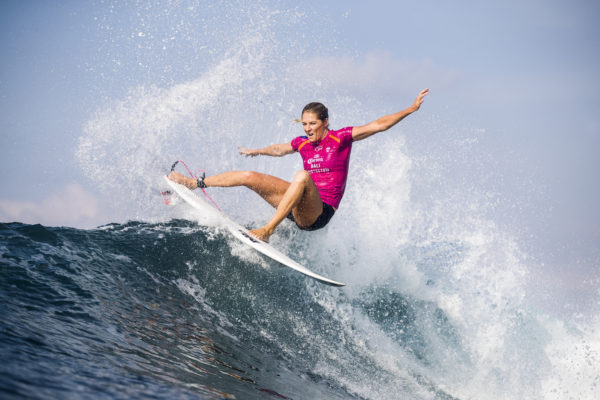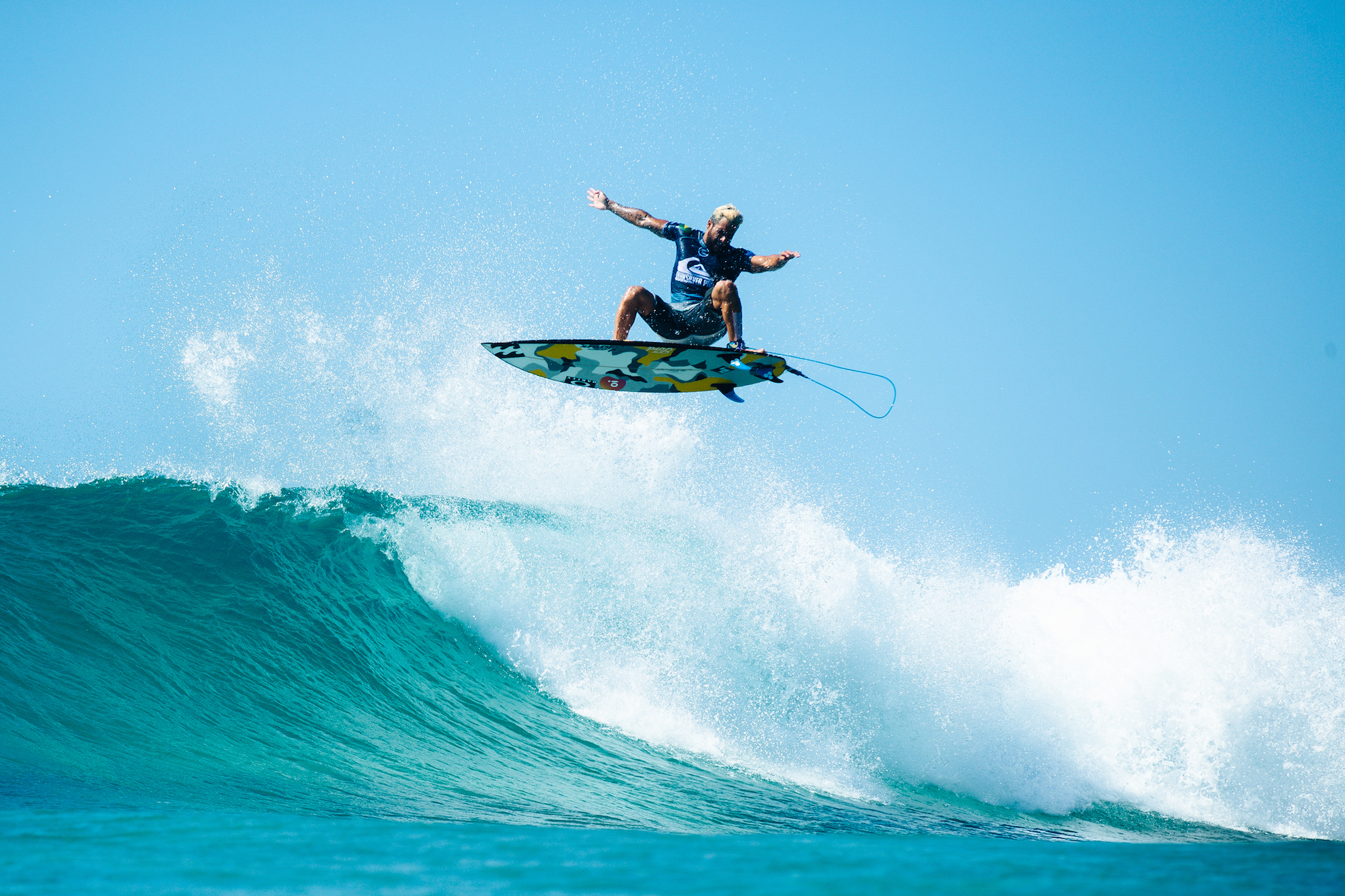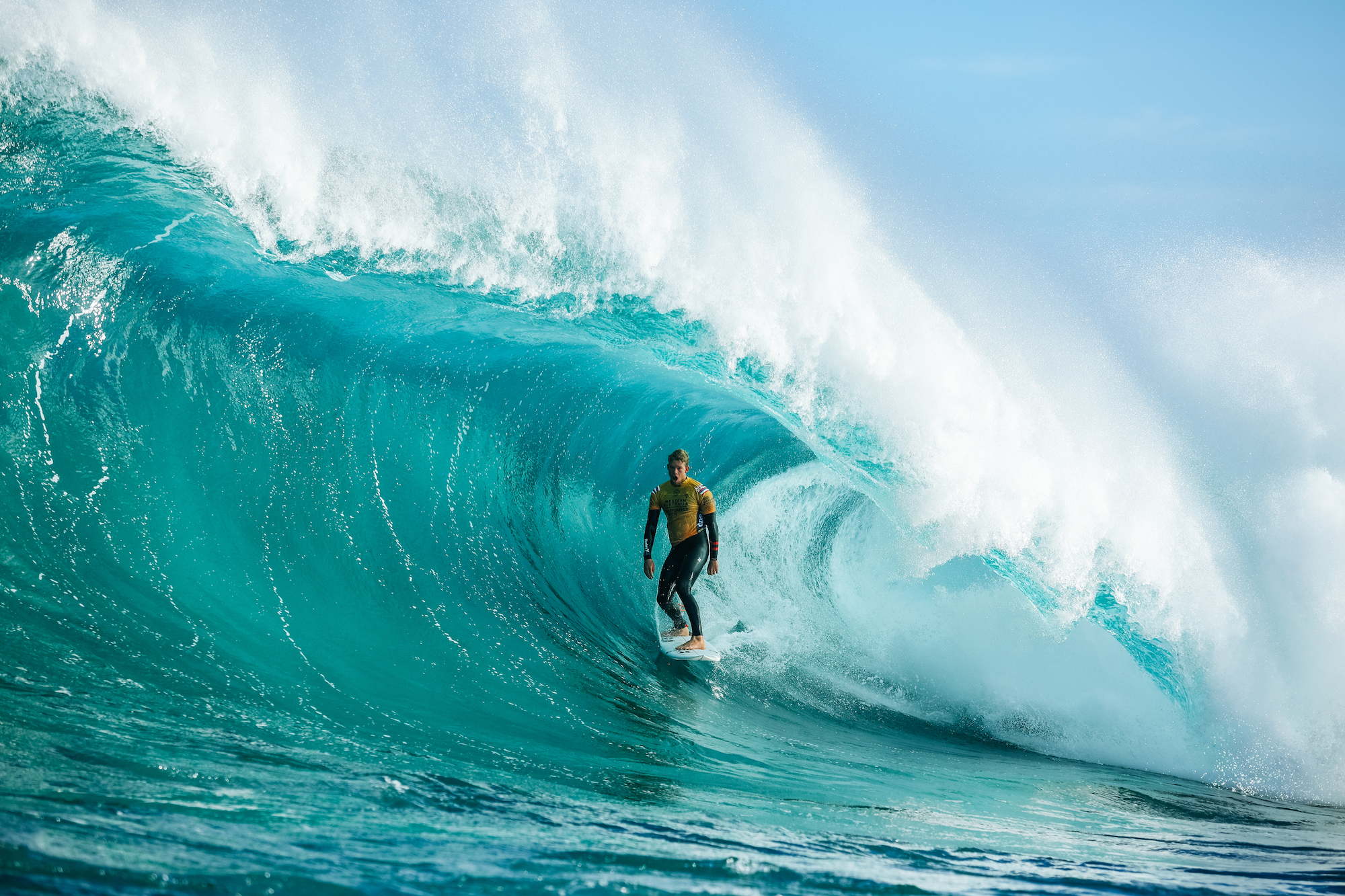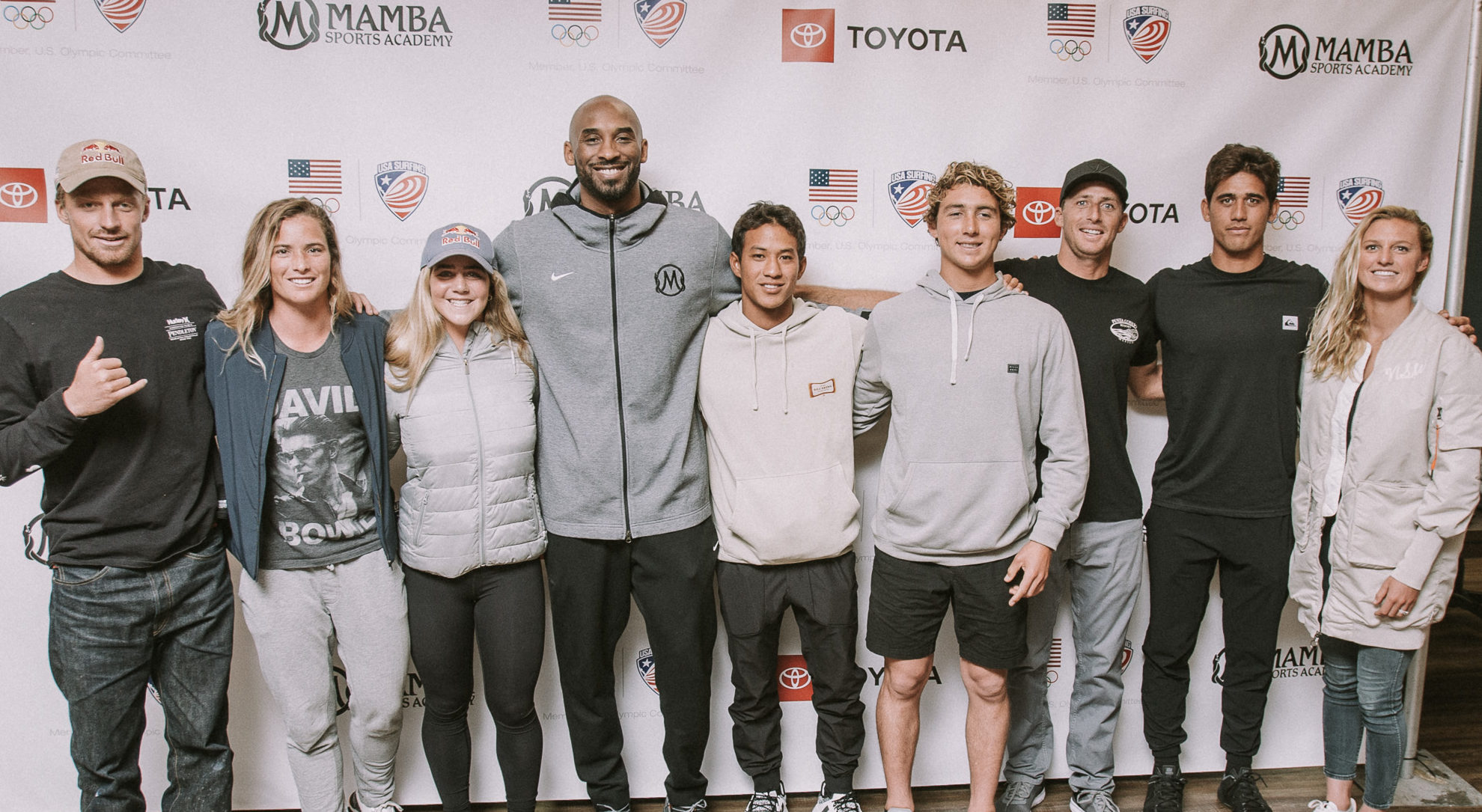Talk about the cherry on top. When Steph Gilmore claimed her seventh Women’s World Title in Maui in 2018, she also earned a little bonus from the Australian taxpayer. As part of the Australian Olympic Committee (AOC) Medal Incentive Funding, athletes who win medals in World Championships in the lead-up to the Olympics are eligible for added funding. In Gilmore’s case, her victory was assigned Gold status and came with $A20,000; meanwhile, Julian Wilson’s runner-up finish in 2018 on the Men’s CT earned him a $A15,000 bonus. Both one-time payments go directly to the athletes.

Seven-time WSL Champion Stephanie Gilmore of Australia. Photo: Matt Dunbar/WSL via Getty Images
They aren’t alone in the Olympic windfall as countries put a significant value on winning a Gold Medal. In 2019 UK Sport announced that surfing would receive £192,500 ($250,000) as part of a new “aspirational fund.” Considering that Luke Dillon, the nation’s highest rated surfer in 2018, finished #276 on the QS in 2019 you have to admire their ambition. Could a quarter-million bucks get Luke to Tokyo? Well, no as it turns out, with the UK choosing their national champions over QS rated surfers. But the question remains; what would a podium finish cost? In Brazil, which has a slightly better chance of winning medals, the government allocated a minimum of $950,000, with more on offer in 2020; however, this will be shared among the six new sports, including skateboarding and softball.
Now for Gilmore and Wilson, two of surfing’s highest earners, their government-funded bonus is chump change. Gilmore might be more inclined to buy a new guitar rather than spend it on Olympics-specific training. Yet it does show the significant coin Australia spends on their Olympic athletes. The total spend, over four years for all summer and winter athletes, is just north of $A30 million.

Italo Ferreira of Brazil. Photo: Matt Dunbar/WSL via Getty Images
READ: Meet the 10 Surfers (Basically) Qualified for the Olympics
Surfing will get just a fraction of that budget, but it’s still no small fee for a country with a population of just 25 million. Surfing Australia, the body recognized by the Australian Olympic Committee, is mainly responsible for doling the funding out. It has an annual turnover of $A7 million, of which more than $A2 million comes from government sources. That doesn’t include the additional $A5.536 million in funding it secured from the Federal and State Governments in 2017 for the expansion of their High Performance Centre at Casuarina.
No wonder, then, that Bede Durbidge, Surfing Australia’s Elite Program Manager, had the budget to take Olympic hopefuls, plus coaches, trainers and shapers, for two three-day blocks at the WSL Surf Ranch last year. Now, if we can forget that Kelly’s pool might not be the best training for Japanese beachbreaks, it shows the money, time and resources being invested in each (hopeful) Gold Medal.
China’s $26-Million Wavepool. Video: Nicola “Nik” Zanella
All this though might be dwarfed by what China could spend on its bid for Olympic surfing gold. Engineers have already built a Surf Ranch approximation, established a National Surf Centre in Hainan and have coaches Peter ‘PT’ Townend and Ian Cairns plus plenty of other Aussie surf coaches who roll in and out of town on shift contracts. The government has started identifying pre-teen kids with possible surfing talent and have been shipping them in to the nascent surf program.
“They come from all over China, selected by province. These provinces might be entirely landlocked, like Guizhou or Sichuan, in fact, some of the kids’ first time ever seeing the ocean was upon arrival at the residential training program set up to turn them into Olympic level surfers,” reported Paul Evans for Wavelength Magazine. “An expat tells me that some kids had never even swam before, nor showed any prior affinity for water sports, but their parents had been convinced to send them to the surf program in return for payments made to them to fill regional quotients.”
Now, no Chinese surfer has qualified for the Tokyo 2020 Games yet — they’ll have another chance at the upcoming ISA World Games — but given the population and the level of planning and investment there’s every chance we can expect to see a Chinese surfer on the podium in the next two decades. The cost of that first medal could be astronomical.

Two-time WSL Champion John John Florence for Team USA. Photo: Matt Dunbar/WSL via Getty Images
In the USA, however, things are very different. The United States Olympic & Paralympic Committee (USOPC) is a nonprofit corporation that does not receive any federal financial support. Instead, it has exclusive right to use and authorize Olympic-related licenses for sponsors as a means of generating revenue in support of its mission. It then hands out the revenue to the various national sports organizations, including USA Surfing.
READ: Olympians Who Surf On Surfing in the Olympics
“Every year we have to submit a high-performance plan to fund specific projects,” Surfing USA CEO, Greg Cruse, told Surfline. “In 2019 we were given $250,000 by the USOPC. We run in a shoestring, lean and mean, and I’d guess the Australians have a 20-to-1 budget advantage on ours.”
In addition to USOPC funding, USA Surfing relies on raising sponsorship and donations for its mission to promote the growth, competitive success, and positive image of surfing while also producing champions. As an example, Toyota is the official partner of the USA Surfing Olympic Team.

Prior to his tragic death, Bryant and been working with Olympic hopefuls like Kolohe Andino and Carissa Marks. Photo: Jeremiah Klein
“We have taken a different approach,” continued Cruse. “Historically we’ve concentrated on the development of youth, and that’s where our funding has gone. And rather than buy and run our own high-performance facility, we are have been in partnership with Kobe Bryant and his Mamba Sports Academy along with Kevyn Dean and DSC Training Centers.” Prior to his tragic death, Bryant and been working with Olympic hopefuls like Kolohe Andino and Carissa Marks.
READ: Kobe Bryant Gives Advice to Olympic Surfing Hopefuls
Cruse also pointed out that three years of cultural exchanges in Japan have led to them building significant local on-ground support. They have booked the closest accommodation to the event site, the equivalent of renting the best house at Pipe, which comes with a commercial kitchen, chef and nutritionist. None of which, you’d imagine, is free.
“Medals take significant investment,” finished Cruse, “and we are trying to be as smart and targeted with the resources as possible so that each athlete will have the best chance of standing on the podium.”





Recent Comments